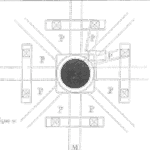
Process Capability, Tolerance, and Reliability
podcast episode
Product failures may occur due to material or component variability. The steel in a bracket is more brittle than optimal, or the capacitance is on the low side of an acceptable range. Designing a product with variation in mind enables the creation of a reliable product.
If there were no variation in material properties, component performance, or assembly techniques, products would work as designed. There is variation. Everything varies. Designers and engineers know this and must consider the expected variation of the elements that make up the product.
Ideally, the design team would work with materials and components with well-characterized process capabilities. This knowledge partly permits the establishment of design specifications for the various elements that make up a product. Including tolerances with a design is this deliberate accounting for the expected or required maximum variation.
The problems come when a designer establishes tolerances when the supporting processes cannot create items within the specified tolerances. The materials and components we use do not read the specifications. They have the variability they have regardless of wishful thinking or specifications.
Creating a truly reliable product requires the design to balance functional performance, manufacturability, and robustness to variation. In this short webinar, let’s talk about how process capability should influence designs such that the resulting product is reliable.
Let’s discuss the reliability engineer’s role in understanding and minimizing process variability while encouraging the design team to establish a robust design with as much variation as possible. Finding the right balance is essential to creating a product that is both producible and durable.
Leave your concerns, questions, and experience with tolerancing.
This Accendo Reliability webinar originally broadcast on 14 August 2018.

- Social:
- Link:
- Embed:
To view the recorded video/audio of the event visit the webinar page.
Related Content
Confidence and Tolerance Intervals episode
Design Tolerances Based on Economics (Using the Taguchi Loss Function) episode
The Importance of Fit, Tolerance & Clearance article
Root Sum Squared Tolerance Analysis Method article
Worst Case Tolerance Analysis article
Leave a Reply